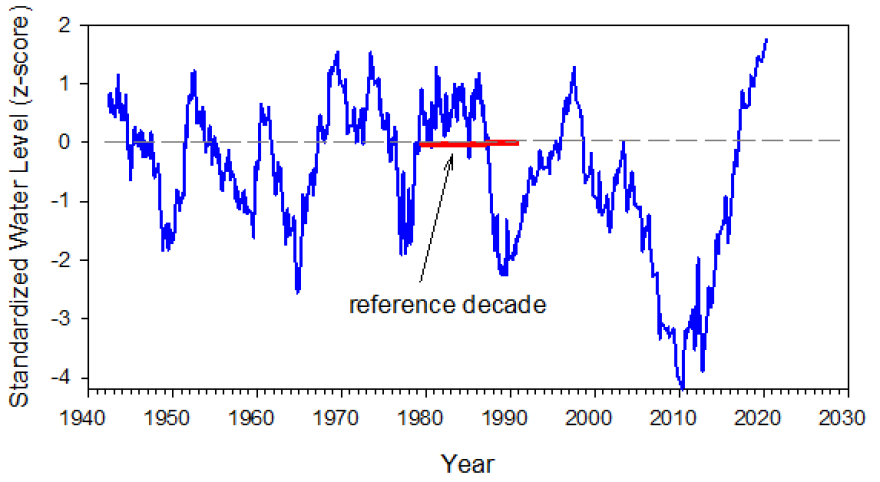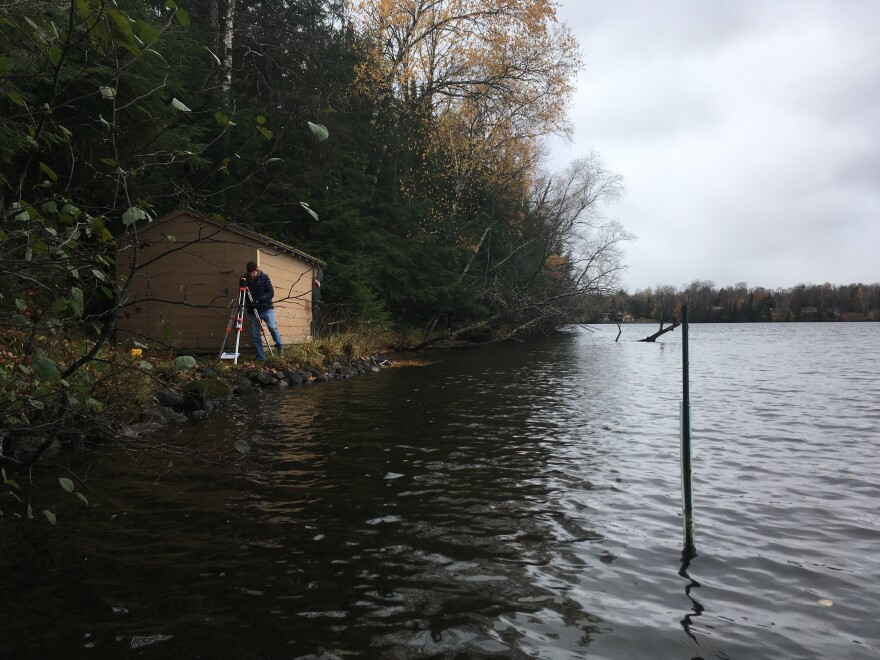Wells ran dry.
Docks stretched into sand, struggling to reach receding lake water.
A decade ago, water levels in lakes across the Northwoods were lower than ever.
Now, they’re at all-time highs.
What’s going on with Wisconsin’s water levels?
Since he moved to his Northern Wisconsin home more than 40 years ago, Mick Fiocchi has always had a well.
He drove the first one himself.
“It was 25 feet deep and had 7 feet of water in the casing,” he said. “We had plenty of water.”
After two decades the pipe started rusting, so Fiocchi had a new well installed.
This one was 40 feet deep.
“It had a lot of water, good water. No problem,” he said. “Then we hit that drought.”
‘That drought’ Fiocchi is referring to is one many Northwoods residents likely remember.
It was at its worst around 2010, when many lakes were strikingly low.
“You would walk out to the end of your dock, jump off and then walk out a little bit more to get to the edge of the water,” Carl Watras, a researcher at University of Wisconsin’s Trout Lake Station, said.
At the time, Mick Fiocchi drilled his well even lower – to about 80 feet.
Then, a force in nature shifted.
“Things turned around in about 2011,” Watras said. “Since that time, water levels have skyrocketed.”
Year after year, water levels in wells and seepage lakes crept higher and higher.
“Now people think the lakes are so much higher than they actually are because the forest has flooded. What’s really happening is the water is just going back to its natural place,” Watras said. “Of course, it’s gone way beyond its natural place in the last two or three years.”
Last year, lake levels in Northern Wisconsin were at a record high.
And Fiocchi’s wondering: what in the world is going on with his well?
“I’m just curious if this winter, when we’ve had significantly less snow if that is beginning to reduce that water table just a bit and what the prognostics are for the coming year,” Fiocchi said.
To answer that question, Carl Watras pulled out a graph.
It depicts water levels in a pair of Northern Wisconsin seepage lakes from 1940 until just last year with a bright blue line.
The line moves up and down, creating a rhythm of peaks and valleys.

“Roughly every 12 or 13 years, we’ve gone through this cycle from low to low or from high to high,” Watras said.
Throughout documented history, he said this cycle has been remarkably regular.
“And it’s also been consistent between our lakes here in the North, our groundwaters and also for two of the largest Great Lakes,” Watras said.
The cycle is caused by a delicate balance between precipitation and evaporation.
When there is lots of rain and snow, it tends to be humid and less water gets sucked back into the atmosphere. That causes lake levels to rise.
But when it’s dry and windy, water tends to evaporate more quickly. That can cause lake levels to go back down.
Lately, this balance has been thrown off.
“Now we’re into a 20- or 30-year cycle with lower lows and higher highs,” Watras said.
According to him, these changes boil down to climate change.
Because of human activities, the changing climate is altering sea surface temperatures in the oceans.
Those changes can be felt all the way in Northern Wisconsin.
Think about it like two people holding opposite ends of a rope, Watras said.
When one person flicks the end of the rope up, a wave travels all the way down the rope to the to the other person.
“That’s what is happening in our atmosphere naturally,” Watras said. “As the Pacific Ocean warms, that wave chain travels across our continent.”
“Depending on how it’s set up, we’re either in this area where we get a low in the right place and a high in the right place and we got more precipitation and less evaporation and water levels rise. If it’s set up another way, we get the opposite.”

Because Northern Wisconsin is speckled with lakes, these changes in precipitation and evaporation are especially obvious.
Back to Fiocchi’s original question: what can we expect water levels to do this year?
We don’t know.
It depends on so many factors – how much rain we get, wind speed, temperatures of the lakes.
But if the current pattern continues, Northwoods residents can expect to see water levels in their lakes and wells inching higher and higher before withdrawing to record lows.
This Curious North story was inspired by a question by Mick Fiocchi. Do you have questions about life in the Northwoods? Submit them online at wxpr.org/curiousnorth and we could answer your question next.









